‘ID’ is a great title for a Mark Wallinger show. For four decades, notions of identity have been at the heart of his practice – from the national myths and symbols that appear in Where There’s Muck (1985) and Oxymoron (1996) to the exploration of religious character seen in the Talking in Tongues video trilogy (1997–99) and the sculpture Ecce Homo (1999). ‘ID’ also hints at the primacy of ideas – sometimes daft, often deep, always diverse – within Wallinger’s work, which is full of imaginative gestures and playful thinking in a range of media. Who else would dress up in a bear suit to roam the Neue Nationalgalerie in Berlin? Which other artist would recreate a political protest in the galleries of Tate Britain?
In Wallinger’s debut show at Hauser & Wirth, London, there’s no shortage of ideas alongside a continued interest in identity, yet it’s the Freudian id – the dark instinctive drive within us – that’s most pertinent to the exhibition’s title. However, while these new works share a thematic concern with psychoanalysis, they seldom delve into the most punishing parts of the psyche. Too often, this feels like a rather tame rendering of radical ideas.
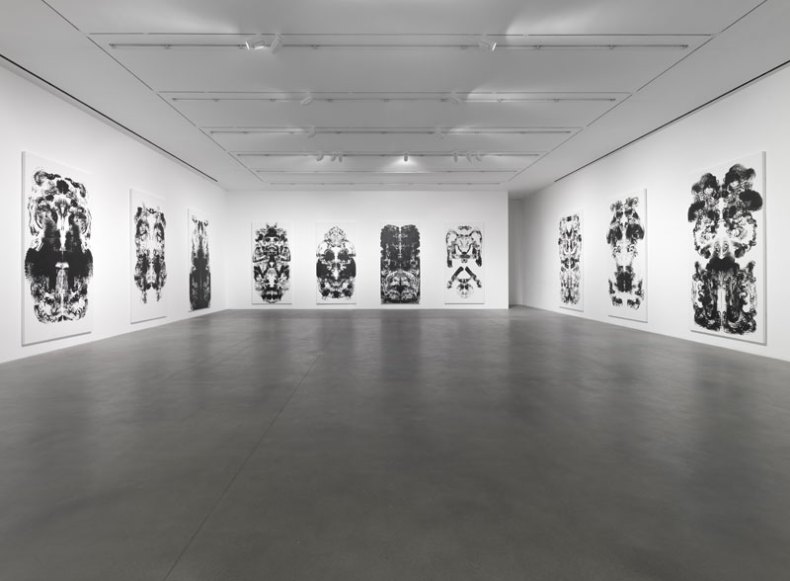
Installation view, ‘Mark Wallinger. ID’, Hauser & Wirth London, 2016. © Mark Wallinger. Courtesy the artist and Hauser & Wirth
The show opens in a manner that’s both humble and hubristic. Tacked to a wall are two small photographs of Wallinger’s hands positioned so that they resemble the close encounter of Michelangelo’s Creation of Adam (c. 1511–12). The work is called Ego (2016), a portrait of the artist that evokes the grand achievements of the Sistine Chapel in an unassuming way and with the self-reflexive humour common to the whole show.
Around the corner is the exhibition’s central body of work: the id Paintings (2015), 17 large canvases from a series of 56 that Wallinger began last August. Each was made, in the artist’s words, ‘nose to the canvas’ in a single session and using only his hands covered in black acrylic paint. The abstract, highly symmetrical patterns these monochrome works contain variously call to mind X-rays, ghostly faces, and tribal markings, though their resemblance to giant Rorschach tests makes inevitable highly subjective responses. Given its title, should we read this series in bluntly analytical terms, as a psyche splurged in paint? Whether the initial conceit merits such an extended enactment also remains dubious.
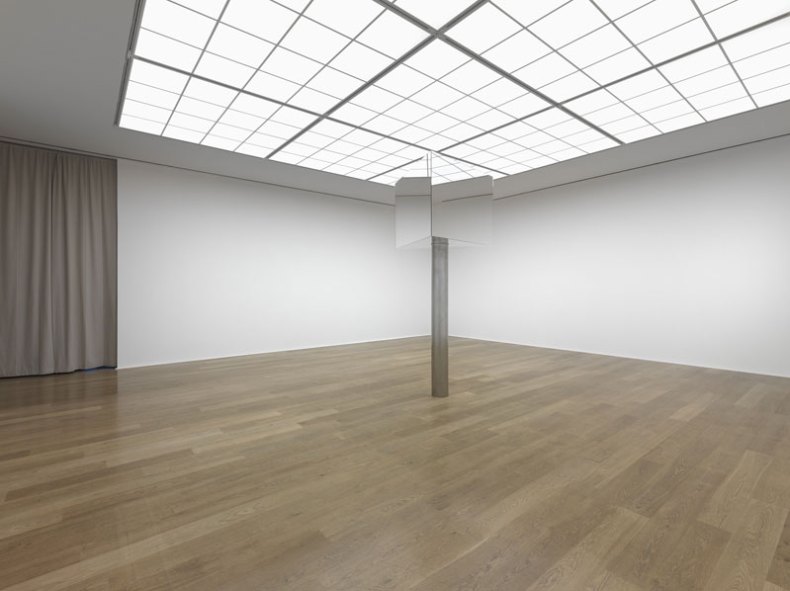
Superego (2016), Mark Wallinger. © Mark Wallinger. Courtesy the artist and Hauser & Wirth. Photo: Alex Delfanne
Down the street in Hauser & Wirth’s Savile Row, South Gallery is the third part of the Freudian triumvirate: Superego (2016) consists of a rotating life-size replica of the triangular New Scotland Yard sign but with mirrored surfaces. It’s a creepy vision of an anonymous all-seeing authority, and a neat counterpart to Wallinger’s famous mirrored TARDIS, Time and Relative Dimensions in Space (2001). With Superego, he links Freud’s concept of self-surveillance with our contemporary landscape of CCTV cameras. There’s a personal aspect to the work, too: the gallery sits opposite a police station where in 1986 Wallinger attempted to identify a group of BNP thugs who’d beaten him up – a task made harder by the fact that his glasses had been smashed in the attack.
Close to the spinning sign of Superego, there’s more rotation in Orrery (2016), a four-channel video installation showing looping footage of a roundabout in Barkingside on the eastern edgelands of London. It’s a rather queasy portrait of a mundane urban landscape. Shot with an iPhone camera fixed to the window of Wallinger’s car, the videos spin us slowly around and around providing recurrent views of an industrial park, a library, a pub, and a housing estate across the four seasons. Standing proudly in the centre of the frame is a large oak tree, planted for the Festival of Britain in 1951 in commemoration of the famous Fairlop Oak that once stood in nearby Hainault Forest. Again, there’s an autobiographical aspect to the work – the roundabout is where Wallinger learned to drive and the title suggests the area still stands at the centre of his own solar system.
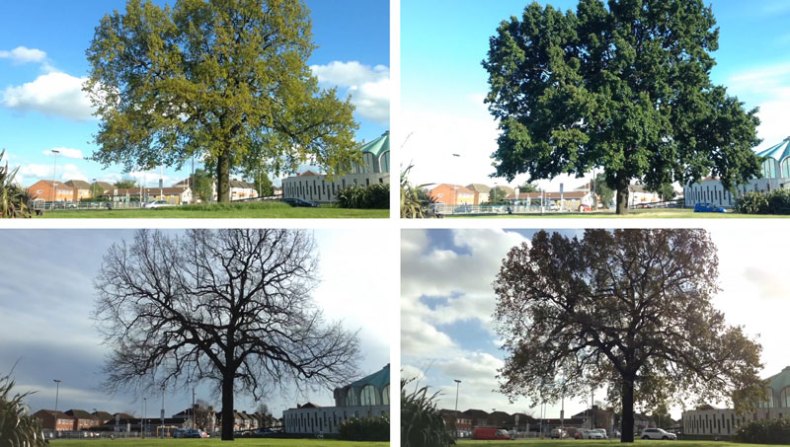
Orrery (2016), Mark Wallinger. © Mark Wallinger. Courtesy the artist and Hauser & Wirth
Two older video works complete the show. Shadow Walker (2011) is a single-channel video installation that follows Wallinger’s shadow as it weaves through the tourists of Shaftesbury Avenue, while Ever Since (2012) is a looping two-second projection of a London barber’s storefront – a video in which the only discernible signs of movement are a spiralling red-and-white pole and a flickering clock vibrating forever at 10.19. It’s a kind of living photograph, projected at a life-size scale that seems to offer a window or portal into the street outside.
Shadows and surveillance, repetitions and reflections: conventionally, these are suggestive of another Freudian concept, the uncanny. In Wallinger’s hands, though, they feel rather gentle – wry rather than sinister, amusing but hardly threatening. In her recent book Women in Dark Times (2014), Jacqueline Rose writes: ‘It is of course a consoling myth to believe that if you open the inner portals of the mind, you will be flooded with light. Rather, the whole point of venturing down such paths is that you cannot possibly know where they will go.’ Wallinger’s new works, by contrast, seem too resolved and neatly packaged, a set of intelligent conceits that lack the dark uncertainty and boundless power of the psyche. In short, where’s the danger in venturing down these paths?
‘Mark Wallinger. ID’ is at Hauser & Wirth, London until 7 May 2016.
Unlimited access from just $16 every 3 months
Subscribe to get unlimited and exclusive access to the top art stories, interviews and exhibition reviews.

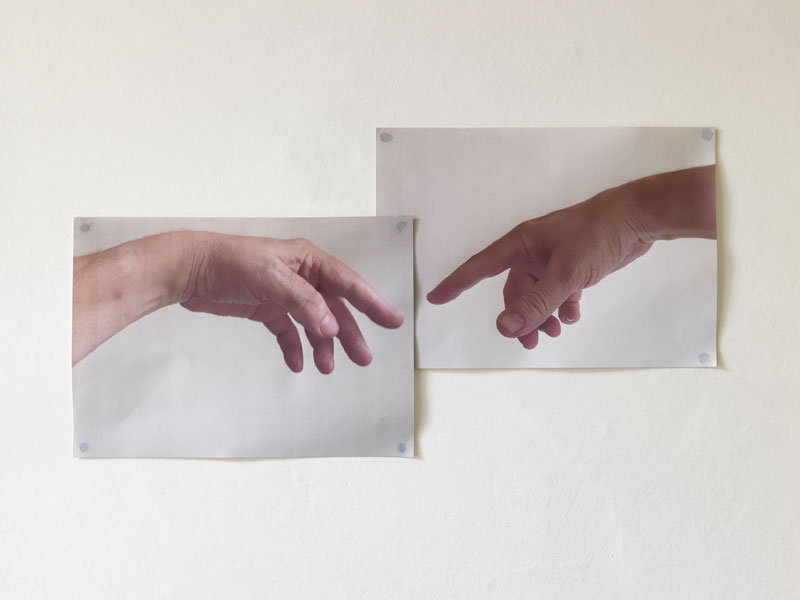

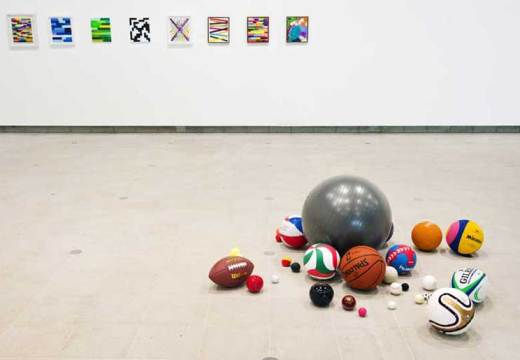
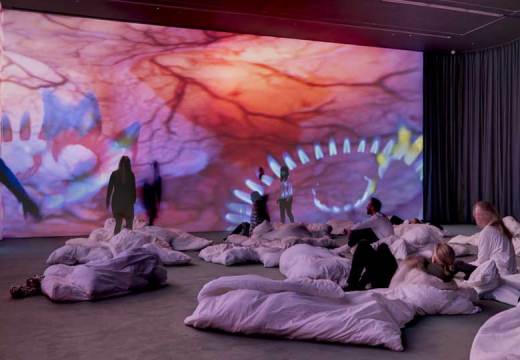









![Masterpiece [Re]discovery 2022. Photo: Ben Fisher Photography, courtesy of Masterpiece London](http://www.apollo-magazine.com/wp-content/uploads/2022/07/MPL2022_4263.jpg)
Why are fathers so absent from art history?